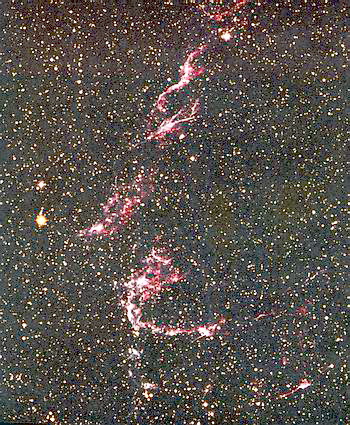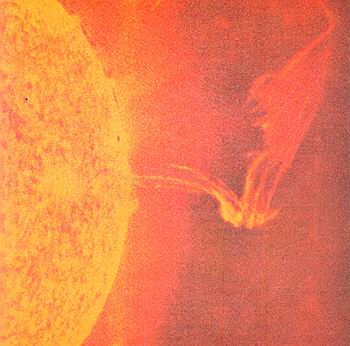The Aim of Life - Isha Upanishad

The Aim Of Life
An Exploration

Isha Upanishad
Introduction
Visit : https://www.youtube.com/watch?v=mQy6bVQDN8U
As one hears of the Upanishads, a distinctive image arises in the mind of a quest leading to the hermitages of teachers who have practised austerities and disciplines of various kinds and have realised in experience the highest states one can conceive of The age of the Upanishads is considered to be a kind of culmination of a seeking that was recorded in the Vedas.
It is a great mystery how, at a time when a large section of humanity was still living in a half-awakened consciousness primarily concerned with physical well- being, there grew a small nucleus of illumined teachers who could traverse domains of inner life and could speak in an extraordinary language packed with meanings which to us seem difficult to understand. Today, Vedic knowledge is considered to be a secret, and indeed, the language of the Vedas is so far removed from the languages of the present day that a good deal of controversy has arisen as to the meaning inherent in the poetry of the Vedas.
But in the next stage of development, we find a literature which is easier to grasp and understand, which has come to be known as the Brahmanas. The Brahmanas are largely devoted to the explanation of rituals — their significance, their symbolism and the meaning of their observance. We do not find in the Brahmanas anything directly related to our present concern with the aim of life. But towards the end of the age of the Brahmanas, there came about a revolt against ritualism and a new seeking, and a new quest arose. There was a feeling that truth cannot be a matter of ritualism and that it must be sought after without dogmatism or any preconceived belief or idea.
This was the beginning of the age of the Upanishads.
The chains of the past-were broken by robust thinkers and seekers who began to chart out a programme of inquiry, and it has been said that these seekers perfected a discovery which in its importance to the future of human knowledge dwarfs the thought of Newton and Galileo. Even the discovery of the inductive method in science was not more momentous. For they discovered, down to its ultimate processes, the method of yoga, and by the method of yoga reached some crowning realisations. They realised as a fact the Existence beneath the flux of things, a supreme unity and immutable stability which they described/or want of better term, as "It" (tat). And sometimes they described it negatively by saying, "Not this, not this" (neti neti).They also realised that reality in itself is consciousness; and perhaps the most important realisation they claimed to have reached is that there is in each individual man that same reality which is identically present in the universe. This realisation was enshrined in two famous formulae of the Upanishads: "He am I" (so'ham) and "I am the Brahman " (aham brahmasmi).
There are more than two hundred Upanishads, but the most important of them are twelve in number.1Of these, the Isha Upanishad occupies a very special place. It is the shortest Upanishad, having only eighteen verses, and yet it is said to contain the quintessence of the entire quest expressed in the Upanishads. Moreover, it describes not only the nature of reality, but also the aim of life that seems to be implied by the very nature of the universe, and by the reality that is in the universe and in man. The Isha Upanishad can also be seen as a synthesis — a synthesis not only in regard to the nature of reality but also in regard to the way of life that one is required to pursue to discover that reality.
One singular message that comes out clearly in this Upanishad is that all contraries meet when one reaches the supreme heights of realisation. Elsewhere, that reality is described either as static or as dynamic. But in the Isha Upanishad reality is described as:
That moves and That moves not;
That is far and the same is near
That is within all this and
That also is outside all this.
1. Isha, Kena, Katha, Prashna, Mundaka, Mandukya, Taittiriya, Aitareya, Chhandogya, Bridadaranyaka, Svetasvatara, Brahmabindu.
In certain exclusive philosophies and teachings it has been said that to discover reality one must renounce all enjoyment. Indeed, the Isha Upanishad also recommends renunciation, but it boldly proclaims: "By that renounced thou shouldst enjoy."
In some exclusive philosophies a contrast is made between the path of knowledge and the path of action. According to them, action may be a preparation for salvation or liberation, but can never actually give it. They argue that only through the path of knowledge can liberation be achieved. Indeed, the Isha Upanishad insists on attainment of the knowledge of reality, but it also insists that "Doing verily works in this world one should wish to live a hundred years. " It perceives that action is not an obstacle, and it declares, "action cleaves not to a man."
It is obvious that the aim of life proposed by the Isha Upanishad is a composite aim, a kind of integral aim, in which one realises the reality that is at once static and dynamic, or which is beyond both motionlessness and movement; and, having realised this, one achieves the highest state of knowledge in which one is still enabled to do works in this world.
Many commentaries have been made on the Upanishads, including the Isha Upanishad. But our purpose is not to enter into these commentaries. One should read the text without any bias and derive from it whatever meaning one is led to derive, in a spirit of free and impartial inquiry. It is not necessary to fall in line with one commentary or another. The aim of life must be discovered by each individual. Each one must cultivate the necessary patience so as not to rush to conclusions but rather to pursue one s goal by considering various affirmations and negations that have been pronounced by seekers throughout the ages.
The Upanishads are also known as Vedanta, not only because they came at the end of the Vedic age, but also because the highest discoveries of the Veda are supposed to be contained in the Upanishadic teachings. Vedanta grew into a school of philosophy in a later period of ancient Indian history, but the original Vedanta was not a philosophy but a dialogue or a collection of insights and intuitions of the seers. The Upanishadic seers maintained that the senses do not give us true knowledge. They also maintained that while the reason, in its pure ideative movement, can grasp the essential truth of reality, it cannot give a concrete experience of that truth. The Upanishadic seers, like modern scientists, developed a method of arriving at knowledge which can be verified through experience. They cultivated the faculty of intuition or illumination through which an individual's consciousness can be so
enlarged as to experience universal and transcendental reality by a kind of identification or identity. Knowledge by identity was the special method of the Upanishads, and they considered anything that was remote from this kind of knowledge to be Ignorance. According to them, the knowledge of multiplicity gained by sense experience or by rational enquiry is Ignorance; that which is known by identity and that which is known by oneness is Knowledge. But here again, the Isha Upanishad reconciles the knowledge of the One and the knowledge of the Multiplicity, and it considers that to be a true synthetic knowledge which combines the knowledge of the One and of the Many. To arrive at this knowledge is, according to the Isha Upanishad, the right aim of life.
Etymologically, Upanishad means "to sit very near". The image suggested is of a seeker prepared to sit very close and very near to the Teacher who has "seen " or realised. This indicates the true spirit of inquiry: he who wants to know must be prepared to approach and sit near the teacher. Both intensity and humility are needed if one wants to know. It is with that intensity and humility that we may now turn to the text of the Isha Upanishad.

All this is for habitation by the Lord..."
ईशा वास्यमिदं सर्व यत् किश्च जगत्यां जगत् |
तेन त्यक्तेन भुञ्जीथा मा गृघः कस्य स्विद्धनम् ||1||
-
All this is for habitation by the Lord, whatsoever is individual universe of movement in the universal motion. By that renounced thou shouldst enjoy; lust not after any man's possession.
कुर्वन्नेवेह कर्माणि जिजीविषेच्छतॉ समाः |
एवं त्वयि नान्यथेतोऽस्ति न कर्म लिप्यते नरो | |2| |
-
Doing verily works in this world one should wish to live a hundred years. Thus it is in thee and not otherwise than this- action cleaves not to a man.
असूर्या नाम ते लोका अन्धेन तमसावृताः |
तांस्ते प्रेत्याभिगच्छन्ति ये के चात्महनो जनाः ||3||
-
Sunless are those worlds and enveloped in blind gloom whereto all they in their passing hence resort who are slayers of their souls.
अनेजदेकं मनसो जवीयो नैनद्देवा आप्नुवन् पूर्वमर्षत् |
तद्धावतोऽन्यानत्येति तिष्ठत् तस्मिन्नपो मातरिश्वा दधाति | |4| |
-
One unmoving that is swifter than Mind, That the Gods reach not, for It progresses ever in front. That, standing, passes beyond others as they run. In That the Master of Life establishes the Waters.
तदेजति तन्नैजति तद् दूरे तद्धन्तिके |
तदन्तरस्य सर्बस्य तदु सर्वस्यास्य बाह्यतः | |5| |
-
That moves and That moves not; That is far and the same near; that is within all this and That also is outside all this.


यस्तु सर्वाणि भूतान्यात्मन्येवानुपश्यति ।
सर्वभूतेषु चात्मानं ततो न विजुगुप्सते ॥ ६ ॥
6. But he who sees everywhere the Self in all existences and all existences in the Self, shrinks not thereafter from aught.
यस्मिन्सर्वाणि भूतान्यात्मैवाभूद्विजानतः ।
तत्र को मोहः कः शोक एकत्वमनुपश्यतः ॥ ७ ॥
7. He in whom it is the Self-Being that has become all existences that are Becomings, for he has the perfect knowledge, how shall he be deluded, whence shall he have grief who sees everywhere oneness?
स पर्यगाच्छुक्रमकायमव्रणमस्नाविरंशुद्धम् अपापविद्धम् ।
कविर्मनीषी परिभूः स्ययम्भूर्याथातथ्यतोऽर्थान्व्यदधाच्छाश्वतीभ्यः समाभ्यः ॥ ८ ॥
8. It is He that has gone abroad — That which is bright, bodiless, without scar of imperfection, without-sinews, pure, unpierced by evil. The Seer, the Thinker, the One who becomes everywhere, the Self-existent has ordered objects perfectly according to their nature from years sempiternal.
अन्धन्तमः प्रविशन्ति येऽविद्यामुपासते ।
ततो भूय इव ते तमोय उ विद्यायां रताः ॥ ९ ॥
9. Into a blind darkness they enter who follow after the Ignorance, they as if into a greater darkness who devote themselves to the Knowledge alone.
अन्यदेवाहुर्विद्ययाऽन्यदाहुरविद्यया ।
इति शुश्रुम धीराणां ये नस्तद्विचचक्षिरे ॥ १० ॥
10. Other, verily, it is said, is that which comes by the Knowledge, other that which comes by the Ignorance; this is the lore we have received from the wise who revealed That to our understanding.
विद्यां चाविद्यां च यस्तद्वेदोभयं सह ।
अविद्यया मृत्युं तीर्त्वा विद्ययामृतमश्नुते ॥ ११ ॥
11. He who knows That as both in one, the Knowledge and the Ignorance, by the Ignorance crosses beyond death and by the Knowledge enjoys Immortality.
अन्धं तमः प्रविशन्ति येऽसम्भूतिमुपासते ।
ततो भूय इव ते तमो य उ संभूत्यां रताः ॥ १२ ॥
12. Into a blind darkness they enter who follow after the Non-Birth, they as if into a greater darkness who devote themselves to the Birth alone.
अन्यदेवाहुः संभवादन्यदाहुरसंभवात् ।
इति शुश्रुम धीराणां ये नस्तद्विचचक्षिरे ॥ १३ ॥
13. Other, verily, it is said, is that which comes by the Birth, other that which comes by the Non-Birth; this is the lore we have received from the wise who revealed That to our understanding.
सम्भूतिव्च विनाशव्च यस्तूढ़ेदाभयं सह |
विनाशेन मृत्युं तीत्वा सम्भत्याऽमृतमश्नुते | |14| |
14. He who knows That as both in one, the Birth and the dissolution of Birth, by the dissolution crosses beyond death and by the Birth enjoys Immortality.
हिरण्मयेन पात्रेण सत्यस्यापिहितं मुखम् |
तत् त्वं पूषन्नपावृणु सत्यधर्भाय ष्टये | |15| |
15. The face of Truth is covered with a brilliant golden lid; that do thou remove, 0 Fosterer, for the law of the Truth, for sight.
पूषन्नेकषौ यम सूर्य प्रजापत्य व्यूह रश्मीन् समूह |
तेजो यत् ते रूपं कल्याणतमं तत्ते यश्यामि योऽसावसौ पुरूषः सोऽहमास्मि | |16| |
16. 0 Fosterer, 0 sole Seer, 0 Ordainer, 0 illumining Sun, 0 power of the Father of creatures, marshal thy rays, draw together thy light; the Lustre which is thy most blessed form of all, that in Thee I behold. The Purusha there and there. He am I.
वायुरनिलममृतथेदं भस्मन्तं शरीरम् |
ॐ कतो स्मर कृतं स्मर कतो स्मर कृतं स्मर | |17| |
17. The Breath of things is an immortal Life, but of this body ashes are the end. OM! 0 Will, remember, that which was done remember! 0 Will, remember, that which was done, remember.
अग्ने नय सुपथा राये अस्मान्विश्वानि देव वयुनानि विद्वान् ।
युयोध्यस्मज्जुहुराणमेनो भूयिष्ठां ते नम उक्तिं विधेम ॥ १८ ॥
18.O god Agni, knowing all things that are manifested, lead us by the good path to the felicity; remove from us the devious attraction of sin. To thee completest speech of submission we would dispose.

Related Books
- Alexander the Great
- Arguments for The Existence of God
- But it is done
- Catherine The Great
- Danton
- Episodes from Raghuvamsham of Kalidasa
- Gods and The World
- Homer and The Iliad - Sri Aurobindo and Ilion
- Indian Institute of Teacher Education
- Joan of Arc
- Lenin
- Leonardo Da Vinci
- Lincoln Idealist and Pragmatist
- Marie Sklodowska Curie
- Mystery and Excellence on The Human Body
- Nachiketas
- Nala and Damayanti
- Napoleon
- Parvati's Tapasya
- Science and Spirituality
- Socrates
- Sri Krishna in Brindavan
- Sri Rama
- Svapnavasavadattam
- Taittiriya Upanishad
- The Aim of Life
- The Crucifixion
- The Good Teacher and The Good Pupil
- The Power of Love
- The Siege of Troy
- Uniting Men - Jean Monnet